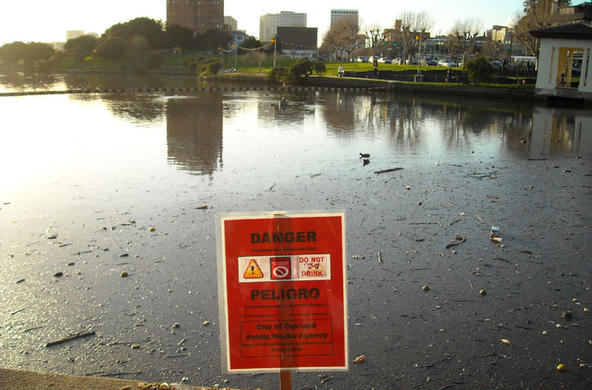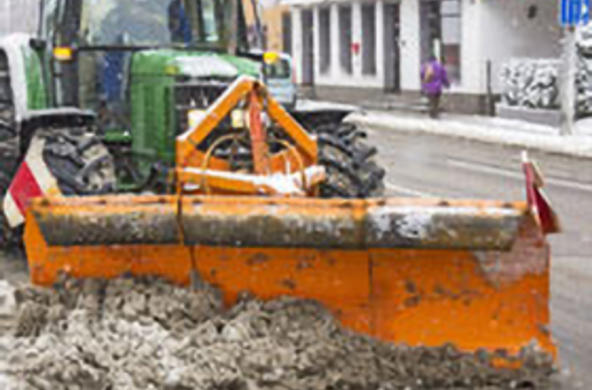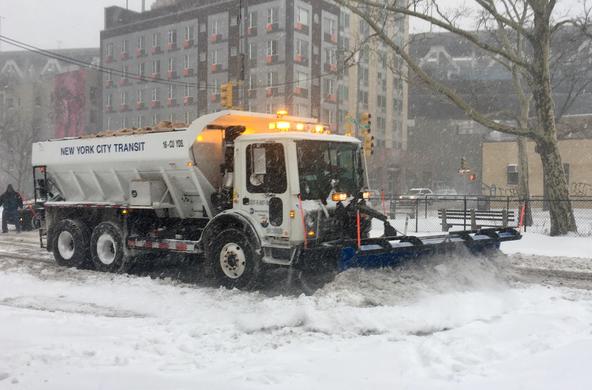More than half of the private wells in the Town of East Fishkill have higher concentrations of sodium from road salt than some government health standards recommend, according to a new study by local scientists.
The findings by the Cary Institute of Ecosystem Studies are preliminary. But they represent the first scientific analysis of well test data collected as a result of laws enacted in 2007 by three southern Dutchess County towns. The findings highlight the potential for continued and deeper analysis of the growing body of well test data, which include results for dozens of other contaminants at each location.
"I am glad they are finally on it and hopefully they can gather more information and track it," Peter Carpenter of East Fishkill said.
The data were provided to the Cary Institute by the Poughkeepsie Journal, which used custom software to collect and collate the well test results from the Dutchess County Department of Health's website.
In 2012, the Journal reported there were many tests missing from that database. Since then, the database has been updated with fresh results.
"The more information we have about water quality — and then to be able to actually map it — allows people to make more decisions about what can help, or hurt, ongoing use of the groundwater," said Scott Chase, former executive director of the Dutchess County Water and Wastewater Authority.
The study's results do not suggest the majority of private wells in East Fishkill are unsafe. Sodium in drinking water is not regulated by the Environmental Protection Agency, although it has been reviewed for potential regulation.
"We made a determination not to regulate sodium because there was no meaningful opportunity to reduce health risks when so much sodium exposure is from diet," EPA spokesman John Martin said.
The state Health Department also does not designate safe sodium levels, other than to say that water containing more than 20 milligrams per liter should not be used by people on restricted-sodium diets. Six out of 10 private wells in East Fishkill tested above this standard, the study found.
High-sodium diets can increase blood pressure, which in turn can lead to heart disease.
The county Health Department says its oversight of regulated public water supplies provides an accurate overview of water quality throughout the county, including private wells.
The county oversees nearly 700 public water supplies — everything from restaurants to municipal systems.
That total is among the largest of any county in the nation, in large part to the development boom that began in the late 1990s and continued after the 9/11 terrorist attacks.
Dr. Kari Reiber, the county health commissioner, said mandated testing of Dutchess County's more than 30,000 private wells would be "redundant and require the expenditure of major additional resources that we do not think is justified."
Reiber said data from the three municipalities with mandated well-testing laws are reviewed by the Health Department.
"If any result poses a concern," she said, "we contact the homeowner to provide information and guidance."
In 2007, Dutchess County leaders weighed a measure that would have mandated well tests whenever a home was sold. The Legislature passed the law, but it was vetoed by then-County Executive William Steinhaus.
Similar laws were later enacted in the towns of East Fishkill, Fishkill and Wappinger.
In 2007, Steinhaus announced what he called a "major" initiative to create a database of water quality information based on the well tests collected in towns.
In a memo, he directed any well test information from the towns be added to the county's database "to serve as a resource to residents."
The Poughkeepsie Journal approached the Cary Institute after it used specially designed software to collect the individual test results from the Health Department's website. The Journal was able to package the data in a way that allowed scientists to plot the results geographically.
The well tests analyzed the water for more than 75 contaminants, including sodium and chloride, which concentrate in groundwater as road salt dissolves.
The data pinpoint the location of each test. The location information allows scientists to plot the results and overlay other information, such as road sizes and elevation.
The data contain results from more than 1,000 tests in East Fishkill alone, though some outliers were excluded from Cary's analysis.
"This was an exciting opportunity to use a pretty robust data set to see if we could figure out some determining factors about how (salt) is distributed in the groundwater," said Vicky Kelly, manager of Cary's environmental monitoring program.
The study is ongoing. But preliminary results, based initially on the East Fishkill data set, were presented for the first time Wednesday at the Hudson River Environmental Society's 2014 Hudson River Symposium at the State College of New York at New Paltz.
Among the findings:
• 60 percent of the East Fishkill wells had concentrations of sodium that were greater than 20 milligrams per liter, the EPA-recommended concentration.
• Only 10 percent of wells had concentrations of chloride greater than the EPA-recommended standard of 250 milligrams per liter.
• Sodium and chloride concentrations increased whenever there was more pavement nearby.
• The concentrations decreased the farther a well was from the nearest road.
• Whether the elevation of the nearest road was above a well mattered only when the distance to that road was greater than 100 feet.
• Road type — minor vs. major — had no effect.
"The goal," Kelly said, "is to provide people and policymakers information they could use to make decisions about using groundwater for drinking water."
Kelly said the study has also identified clusters of high concentrations, but scientists were not ready to identify those because they had not accounted for all the possible reasons why a cluster might exist.
She confirmed that one of those clusters was in Hopewell Junction near the intersection of Route 52 and the Taconic State Parkway, the site of a former salt storage facility owned by the state Department of Transportation.
In 2012, the Journal reported that some homes there with shallow wells had high concentrations of sodium and chloride. The DOT is planning to drill new wells and pay restitution to the affected homeowners.
While the study's information base for East Fishkill is deep, the same is not true for other locations in the county.
The researchers are also examining results from 125 tests at single-family, owner-occupied homes throughout the county. The tests were announced by Steinhaus, the former county executive, in 2007.
The 125 locations were selected at random and represented every municipality in the county.
Today, that total would account for less than one-half of one percent of the total number of private wells in the county.
"So we don't have as many points in that wide geographic area as we do in a small geographic area in East Fishkill," said Neil Curri, a GIS specialist with Cornell Cooperative Extension Dutchess County who has helped with mapping the data.
The scientists say that having a countywide data set would allow them to compare the East Fishkill results with other areas that are more rural.
"Another thing a data set like this will eventually provide is a time series," Kelly said. "We don't know anything about how salt in one place changes over time."






